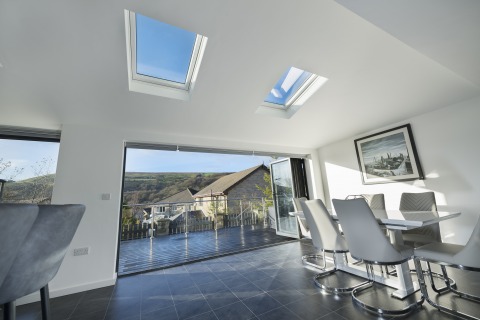There are clear differences between cold and warm roofs and suggests that if it’s the former, then product liability issues may become a future problem for the sector…
For several years now the solid, tiled roof market has thrived and for those businesses that operate dedicated fitting teams, it’s been an opportunity for sales of new installations and also for replacement & refurbishment projects. In many ways we are as an industry edging ever closer to the single storey extension market, the holy domain of the traditional builder.
The benefits are clear in that projects can be completed far quicker, with far less disruption on site and from the consumers perspective, this is a major plus given their eagerness to enjoy their new room. If they can enjoy a true ‘warm roof’ construction then condensation, need not be a worry, however some systems are not necessarily 100% warm.
But what is a warm roof? A warm roof is one in which the insulation sits above all of roofing structure and this includes the eaves, an area where we have developed our own fully insulated solution. In contrast, a cold roof is one where the insulation sits in between the roofing structure and so this limited construction methodology has the potential for condensation occurring if not ventilated effectively.
Condensation is a common sign of inadequate insulation and/or ventilation. So, when the warm air rises up into the roof, typically 12 grams of water per cubic metre of air needs to go somewhere. When a surface is cooler than the dew point temperature (when the air is fully saturated with water vapour), condensation will occur as droplets within the structure of the roof.
With an average room temperature of 20 degrees Celsius and a UK average of 50% humidity to the inside of a property, the dew point is around 9 degrees Celsius and so condensation can affect solid, insulated tiled roofs with a cold roof construction for over half of the year.
So, for many of the solid roofs that are being fitted without a true warm roof construction, particularly at the eaves, there’s the potential for condensation to occur to the inside of the roof for the most part of the year. It’s also a phenomenon that will become more prevalent over the years and we’ve already seen cases on site that support these facts.
While several tiled roof systems have the potential for condensation to occur, fundamentally where does the liability lie? Installers will be the first port of call for concerned homeowners and yet going on site and replacing the plasterboard and subsequent decorating and making good is nothing more than a very short-term fix. I would suggest the business risk maybe considerable for companies focusing on the solid roof segment, after all referral sales are an essential part of their business success.
Warm roofs are the ideal means to help eliminate condensation, which can and does occur for over half of the year here in the UK. We must look to the long-term and offer consumers and trade partners better roof solutions and ones which offer a 100% WARM construction for the long-term.
Our WARMroof system also won the 'Best Solid Roof System' award at The Conservatory & Orangery Awards with the judges commenting "An extremely well designed and robust system with impressive pitch ranges and options for triple glazing."
Email us today for quote > enquiries@prefixsystems.co.uk




Speak to our team
Contact us today to enquire about products, get marketing materials for your customers or to receive after-sales care from our dedicated team.
We take your privacy seriously and only use your data to respond to your request. View our Privacy Policy to learn more.

